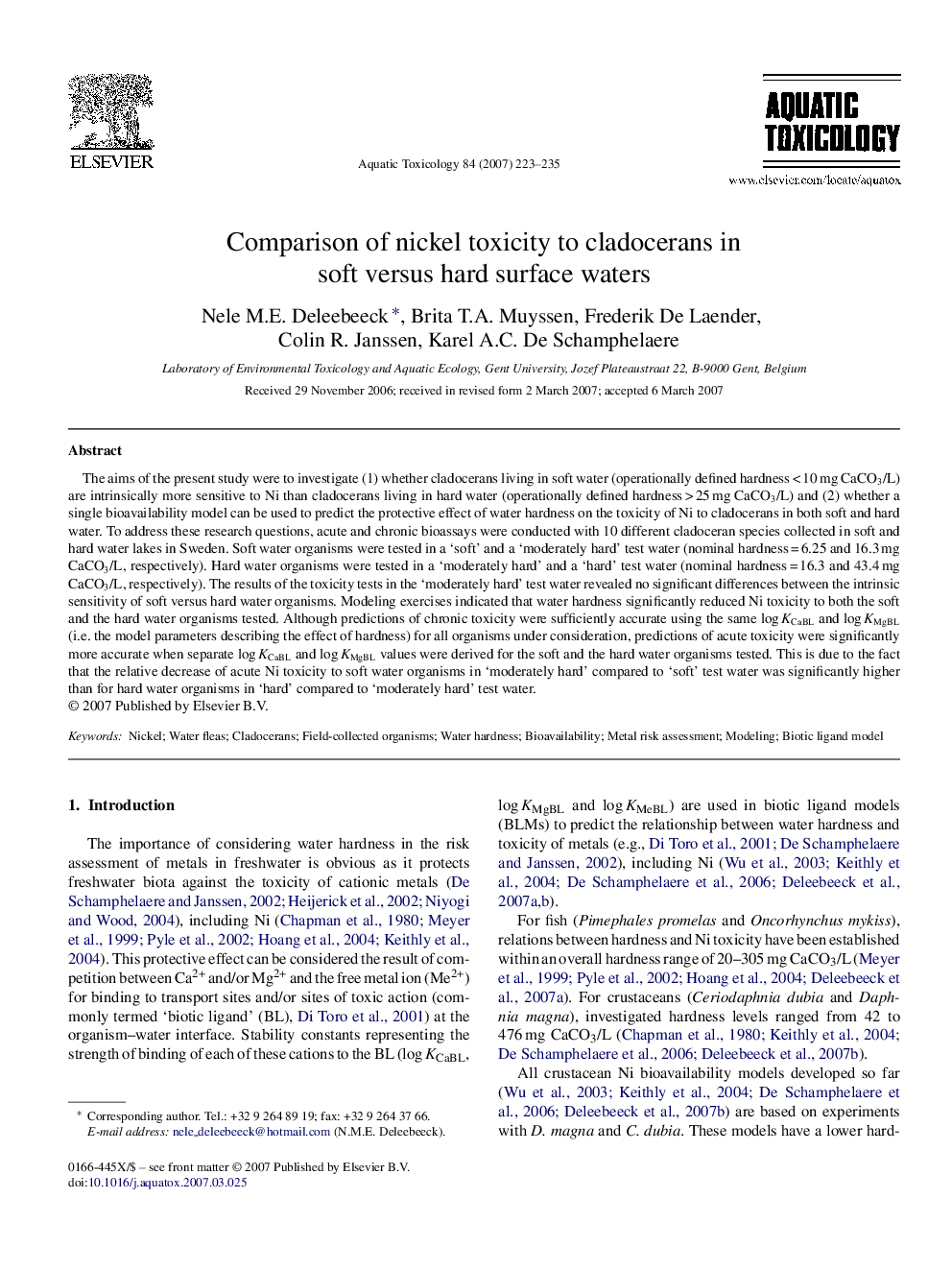| Article ID | Journal | Published Year | Pages | File Type |
|---|---|---|---|---|
| 4531044 | Aquatic Toxicology | 2007 | 13 Pages |
The aims of the present study were to investigate (1) whether cladocerans living in soft water (operationally defined hardness < 10 mg CaCO3/L) are intrinsically more sensitive to Ni than cladocerans living in hard water (operationally defined hardness > 25 mg CaCO3/L) and (2) whether a single bioavailability model can be used to predict the protective effect of water hardness on the toxicity of Ni to cladocerans in both soft and hard water. To address these research questions, acute and chronic bioassays were conducted with 10 different cladoceran species collected in soft and hard water lakes in Sweden. Soft water organisms were tested in a ‘soft’ and a ‘moderately hard’ test water (nominal hardness = 6.25 and 16.3 mg CaCO3/L, respectively). Hard water organisms were tested in a ‘moderately hard’ and a ‘hard’ test water (nominal hardness = 16.3 and 43.4 mg CaCO3/L, respectively). The results of the toxicity tests in the ‘moderately hard’ test water revealed no significant differences between the intrinsic sensitivity of soft versus hard water organisms. Modeling exercises indicated that water hardness significantly reduced Ni toxicity to both the soft and the hard water organisms tested. Although predictions of chronic toxicity were sufficiently accurate using the same log KCaBL and log KMgBL (i.e. the model parameters describing the effect of hardness) for all organisms under consideration, predictions of acute toxicity were significantly more accurate when separate log KCaBL and log KMgBL values were derived for the soft and the hard water organisms tested. This is due to the fact that the relative decrease of acute Ni toxicity to soft water organisms in ‘moderately hard’ compared to ‘soft’ test water was significantly higher than for hard water organisms in ‘hard’ compared to ‘moderately hard’ test water.
